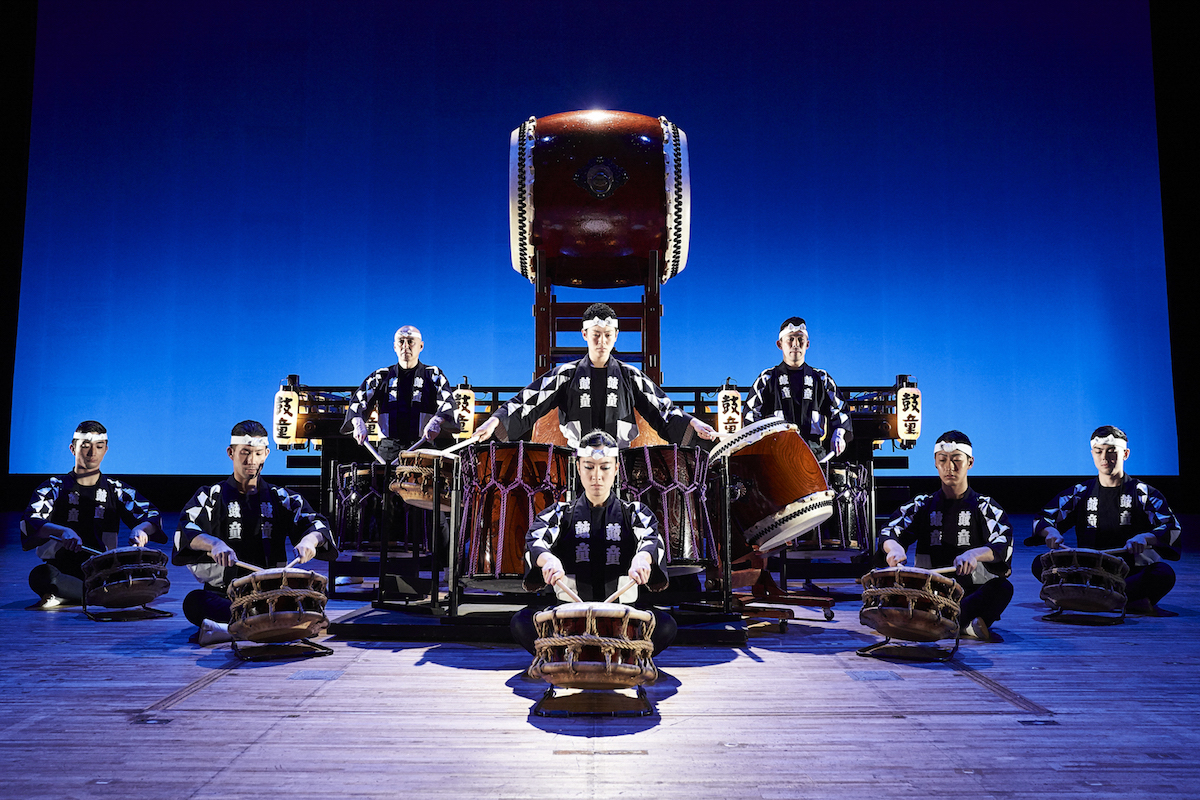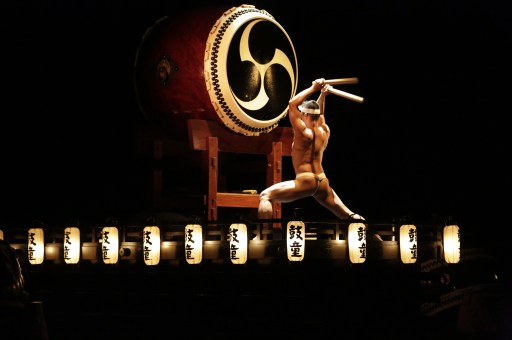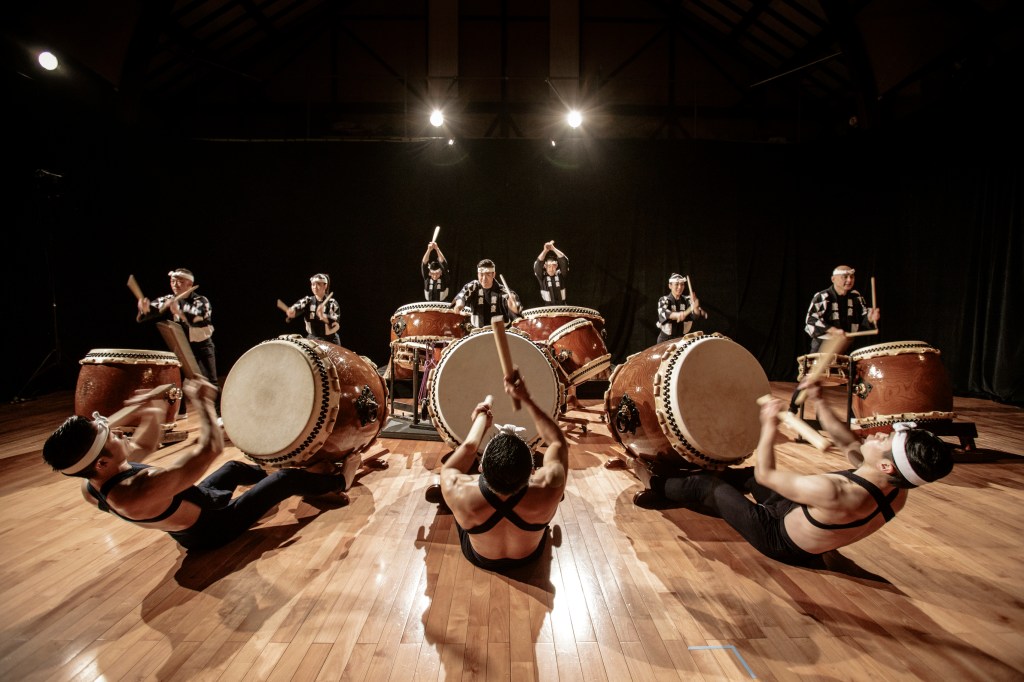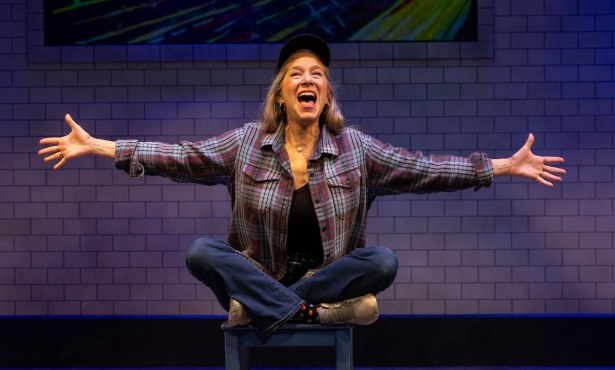Review | Japanese Drumming Ensemble Kodo Takes On the Santa Barbara Granada
Drummers Bridge the Gap Between Humans and Nature with Show Balancing Stoicism and Playfulness

The Japanese word “kodo” can be translated two ways — “heartbeat” and “children of the drum” — both of which embody the essence of the renowned taiko drumming troupe Kodo, whose flawless performance took place at The Granada Theatre on the evening of February 10 .
The performance was Kodo’s sixth stop on their Tsuzumi: One Earth Tour, celebrating the 40th anniversary of the ensemble, from their 1971 beginning on their home island of Sado to becoming the international sensation they are today.
Not only did their performance display a keen sense of technical ability as the 13 performers took to their taiko drums and various instruments, but the show also expressed the troupe’s desire to “play the drums with the simple heart of a child, transcend language and cultural boundaries,” and, in their One Earth Tour particularly, “to find a harmonious balance between people and the natural world,” a notion that permeated each piece and echoed in the audience’s own heartbeats alike.
Across the entirety of the show, the performers displayed their ability to express a variety of dispositions while playing, ranging from deep stoicism and passion to more gentle and playful performances. Each of the 13 pieces was entirely distinct, constantly building and diffusing tension and peace in sound, with the multidimensional incorporation of wooden flutes, handheld percussion instruments, drums ranging in size from handheld to larger-than-human, song, dance choreography, and chants.
Without the incorporation of auditory editing or technical distortion, the sound of the performance took on a very raw and simplistic tone, which was perhaps, one of the most striking aspects. As the sound of singular drums built upon one another and eventually filled the theater, an uninhibited and human sound was created, as if each performer was deeply and spiritually connected to the performance in a way that could only be achieved by the rawness of the sound.

Further, a pristine visual balance was produced on stage, in which performers appeared to balance one another out while playing. In the fourth performance, four large drums promoted a sense of balance as they were positioned across stage, with each of the six performers on either side, playing in perfect synchronicity. As each performer lifted their arms in unison, a sense of tension was created, matched by their uniformly sober countenances. The visual aesthetic of this performance certainly allowed for a level of balance to be achieved in the performer’s stage positioning and synchronization, in a way that transcended the auditory landscape alone and echoed the balance found within the natural world.
Along with Kodo’s auditory rawness and visual aesthetic of balance, the intense strength and skill held by each performer in regards to the physicality needed to play such large drums further produced a sense of harmonious connection between human and sound.
In the 10th song, two performers adorned in traditional clothing that revealed the majority of their bodies began the task of playing the largest drum on stage, taller than the performers themselves and in need of great physical strength and endurance to play. As each performer hit his drum in what is clearly a strenuous and complex task, a resounding “heartbeat” sound filled the theater.
In many performances, the performers strayed away from stoicism and expressions of deep focus, and leaned into the more childlike, playful means of playing the drums. Within the seventh performance, a woman with a taiko drum entered the stage, and performed a thrilling solo, followed by the entrance of further performers, each taking turns soloing, building off one another, and producing an atmosphere of excitement and passion. I found myself most touched when seeing the soloing performers break out into joyous grins while playing, often chanting or yelling amidst the drums.
Kodo’s performance not only brought their home island of Sado and the beautiful and traditional ways of performance to Santa Barbara, but it also embodied the perfect balance of stoicism and playfulness. Not only does Kodo truly emulate this balance between childlike playfulness and intense auditory passion, but they also promote a raw sound and visual balance that evokes the balance of the natural world, ultimately producing what they hope is a “new culture rooted in the rich possibilities of a peaceful coexistence between humanity and nature.”





You must be logged in to post a comment.